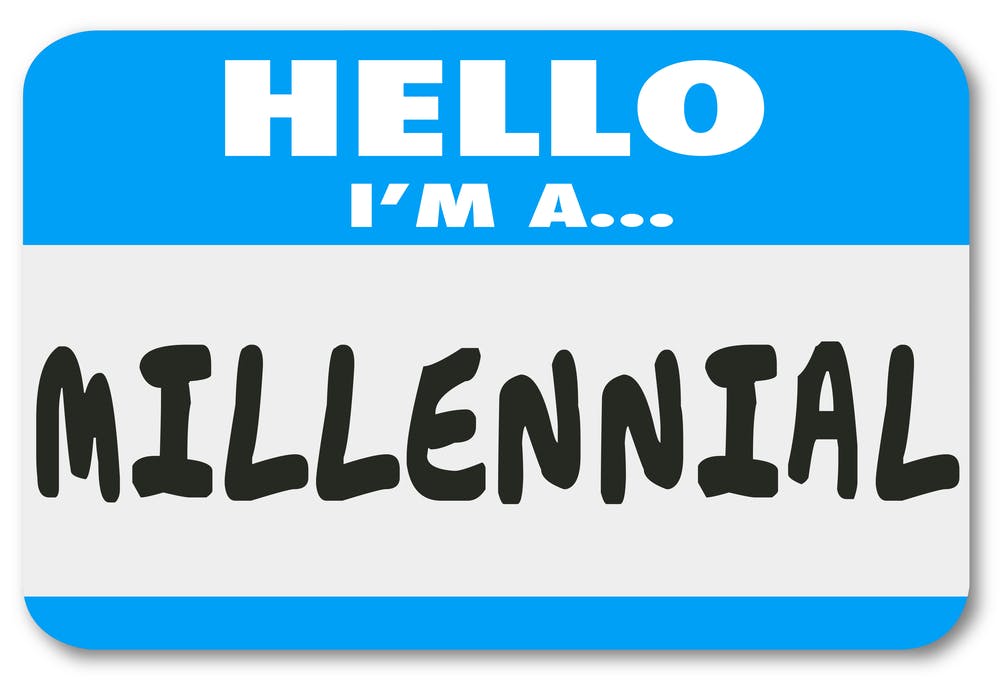Millennials are the last generation with a front row seat experiencing the change from analog to digital.
Their youthful eyes saw the world turn global and connected. They were witness to the introduction of the sharing collaborative economy.
What can we learn from them?
- What is a Millennial? Millennials (also known as Generation Y) are people born between 1980s and early 2000s.
- Are Millennials different from non-Millennials? No. Recent research from Oxford Economics indicated almost no difference.
- So what is all the fuss about then? Millennials themselves might not be so different from other people, but the change (and pace of change) they represent is significant. Millennials are an anchor for this change. Millennials have shaped and consumed innovations and they will soon be the most dominant generation in the workforce.
How should organizations anticipate on these changes?
1. Focus on life phases rather than generations
Approaching a group only by a certain age can be misleading. Ultimately it is behavior and thinking that determines what “generation” you are. It’s not the years, it’s the mileage that counts!
We are all getting older, we live longer, and thus we work longer. The Oxford research shows that the older we are, the more we value work-life balance, which increasingly means choices in how and where we work. Offering this flexibility to the workforce is a huge differentiator to attract and retain talent.
2. Have your workforce reflect your customer base
Today we have five generations in our workforce. As we innovate faster, we change faster, so we will encounter more (age) diversity in the workplace.
The challenge is to have your workforce composition reflecting your customer base. This way you will better understand the actual need of your customers. If your customers are Millennials who travel with Uber and sleep with AirBnB, then what’s the point of having a director who likes to buy paper tickets?
How can you do this? By doing Strategic Workforce Planning, looking at the composition of your workforce today and in the far future.
3. Gamification
Millennials have owned a Playstation 1, 2, 3 and now a 4. They have lived to see Pac-Man turn into GTA5 (Grand Theft Auto 5 is the most successful game, earning over $ 1 billion in three days). Trust me, gamification works! This generation likes to compare themselves to peers. How can you bring that into practice?
- Creating challenges and rewards. See employees compete in “missions” for badges and points by viewing videos, completing quizzes, or uploading their own submissions, to qualify for prizes or gain time to work on innovative ideas.
- Make rewards public (because Millennials like to see their performance relative to others).
- Give immediate feedback and comparison (because Millennials like immediate feedback).
Gamification is not only bound to Millennials. I believe the mechanics of challenges and rewards appeal to any generation. The Millennials only grew up with games and thus are more connected to those mechanisms. Introducing more gamification will increase performance.
4. Use the latest and greatest technology!
Millennials have seen the world transform from analogue to digital. They are the first generation of digital natives, and their affinity for technology helps shape how they consume.
They are used to instant access to price comparisons, product information and peer reviews. Instant access to information is the standard.
5. Offer more experiences!
Some people think Millennials are in the business of organization hopping. But look closer: they actually hop from experience to experience.
This makes it extremely important to look at your internal career maps. If you have a large organization, then turn that size in an advantage with rich internal career options. Your succession plans should encourage both vertical and horizontal options. And the culture should applaud horizontal moves.
Break down silo’s that prevent people from sharing talent. And keep track of your key talent! You have to offer a diversity of experiences. If you don’t, then job hopping is the only option left.
6. Adjust learning & development to different generations
Change happens to us all — every generation, not only Millennials. More change than ever means more development needs than ever. And different generations need different approaches to learning.
The multi-tasking Millennial has a decrease in attention spend and craves bite-sized learning, while a Baby Boomer might like to read a traditional book with real paper pages. Be that as it may, every generation needs to keep up with the latest to stay relevant in the workplace and thus organizations have to think careful about the learning and development needs for various generations.
7. Pay for meritocracy
Paying for seniority is outdated unless you are paying for seniority because they have more experience and thus more added value.
8. Look ahead: The iGeneration is coming
The difference between the iGeneration (Generation Z) and Millennials is bigger than any generation gap we’ve seen.
While Millennials experiences the difference between an analogue world and a digital world including the transition from one to another, the iGeneration (or heads down generation) will not. They only know digital, but they will try to swipe any graphic they see. They will not memorize anything that you can find with Google and some of them will not be able to use a pencil!
Conclusion
Millennials are living and breathing the change in our society. From analogue to digital, from local to global, the introduction of the sharing collaborative economy. They are dedicated to wellness and living longer. They embody our human evolution and are driving force of our economy.
They will be followed by the iGeneration, who will pick up the baton and will, together with technology, redefine our way of living even more drastically. We can only admire the beauty of this diversity, embrace the benefits in our lives and get prepared.
